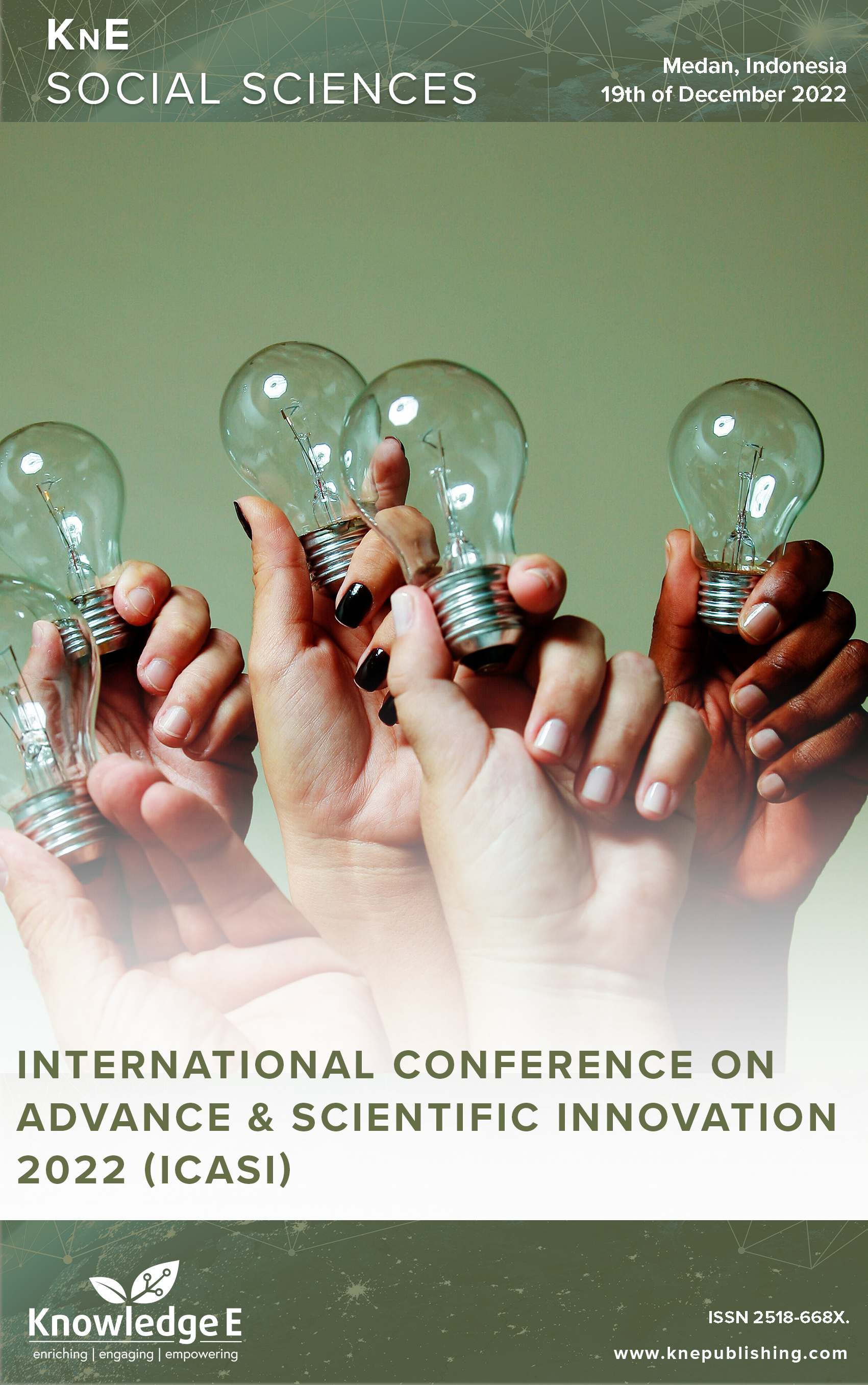Dengue Hemorrhagic Fever in The Working Area of Abeli Public Health Center, Kendari City
DOI:
https://doi.org/10.18502/kss.v8i9.13360Abstract
Dengue Hemorrhagic Fever (DHF) is an infectious illness spread by vectors caused by a virus. According to data, DHF cases at Abeli Health Center in 2021 have increased compared to the previous year, namely 19 cases. These cases have increased compared to the incidence of DHF, with 3 cases in 2020 and 6 cases in 2019. The primary goals of this study are to explain the description of dengue fever incidents at the Abeli Health Center in Kendari City in 2022. In 2021, This type of research will employ an observational survey with secondary data obtained from health data in the Abeli Health Center work area. Furthermore, it is linked to reports of DHF events in the Abeli Health Center’s operating area. The type of investigation data was numerical. The investigative information was displayed within the frame of charts and narratives. This study found no association between the description of Dengue Hemorrhagic Fever in the working region Abeli Public Health Care, Kendari City, in 2022. This was because most of the houses in the district met the requirements of healthy homes. Meanwhile, the cases of Dengue Hemorrhagic Fever (DBD) and Wastewater Disposal Channel (WWDC)inAbeli District, Kendari City, 2022, still had a relationship. This was because many Wastewater Disposal Channels still did not meet the requirements, which risk causing dengue fever in Abeli District, Kendari City, in 2022.
Keywords: Dengue Hemorrhagic Fever (DHF), Wastewater Disposal Channel (WWDC)
References
[2] Mistawati Y, Lestari H. Forecasting prevalence of dengue hemorrhagic fever using ARIMA model in Sulawesi Tenggara Province, Indonesia. Public Health Indonesia. 2021;7(2):75–86.
[3] Marwaty M, Wahyono MT. Faktor Lingkungan Rumah dan Keajadian Demam Berdarah Dengue di Kota Palopo 2016. Jurnal Epidemiologi Kesehatan Indonesia. 2019;2(1):19–26.
[4] Hartiono EJ, Nyoman WI. ”Hubungan Antara Status Gizi Dengan Penurunan Kadar Trombosit Pada Anak Yang Menderita Demam Berdarah Dengue Di RSUP SANGLAH DENPASAR Periode Maret - Desember,” E-JURNAL MEDIKA UDAYANA /, vol. 8, no. 8, 2015.
[5] Tosepu R. Trends of dengue hemorrhagic fever in bau bau district, Southest Sulawesi province, indonesia, 2009-2014. Public Health Indonesia; 2017. pp. 147–51.
[6] Tosepu R. Factors Related to the Presence of Mosquito Eggs Trapped in Ovitraps DHF-Endemic Areas in Kendari City, Indonesia. Public Health of Indonesia. 2021;7(4):159–65.
[7] Organization WH. ”Dengue and severe dengue,” World Health Organization, 10 January 2022. [Online]. Available: https://www.who.int/news-room/factsheets/ detail/dengue-and-severe-dengue. [Accessed 26 December 2022].
[8] K. RI. ”Profil Kesehatan Indonesia,” in Profil Kesehatan Indonesia, Jakarta, Kemenkes RI, 2021, pp. 21-29.
[9] Sultra B. ”Jumlah Kasus Penyakit Menurut Kabupaten Kota Dan Jenis Penyakit di Sulawesi Tenggara,” 17 November 2020. [Online]. Available: https://sultra.bps.go.id/statictable/2021/04/27/3075/jumlah-kasuspenyakit- menurut-kabupaten-kota-dan-jenis-penyakit-di-sulawesi-tenggara- 2020.html. [Accessed 26 Desember 2022].
[10] Sultra, ”Profil Kesehatan Sulawesi Tenggara Tahun,” 15 Oktober 2020. [Online]. [Accessed 26 Desember 2022].
[11] P. Abeli, ”Data Kesehatan Puskesmas Abeli,” 2021. [Online]. [Accessed 23 September 2022].
[12] Syamsir AD. Analisis Spasial Efektivitas Fooging di Wilayah Kerja Puskesmas Makroman. Volume 1. Jurnal Nasional Ilmu Kesehatan; 2018.
[13] Syamsir AD. Analisis Spasial Efektivitas Fooging di Wilayah Kerja Puskesmas Makroman. Jurnal Nasional Ilmu Kesehatan; 2018. p. 1.
[14] Hidayat L. Pengaruh Sosiodemografi dan Kondisi Lingkungan Terhadap Kejadian Demam Berdarah Dengue (DBD) Di Unit Wilayah Kerja Puskesmas Tegal Gundi. Jurnaal Intersional; 2014. pp. 1–4.
[15] Wahyono TM. Faktor-Faktor Yang Berhubungan Dengan Kejadian Demam Berdarah dan Upaya Penanggulangannya Di Kecamatan Cimanggis. Jurnal Nasional; 2010.
[16] Mawaddah F, Pramadita S, Triharja AA. Hubungan Kondisi Sanitasi Lingkungan dan Perilaku Keluarga dengan Kejadian Demam Berdarah Dengue di Kota Pontianak. Jurnal Teknologi Lingkungan Lahan Basah. 2022;10(2):215.
[17] N. Hendayani and Y. &. I. S. Faturahman, ”Hubungan Faktor Lingkungan dan Kebiasaan 3M Plus dengan Kejadian Demam Berdarah Dengue (DBD) di Wilayah Kerja Puskesmas Manonjaya.,”. Jurnal Kesehatan Komunitas Indonesia. 2022;18(1):406–15.
[18] K. K. RI. ”Pembuatan saluran pembuangan air limbah (SPAL) Sederhana.,” in Kebijakan Diklat Kesehatan Lingkungan, Jakarta, Kementrian Kesehatan, 2018, pp. 1-20.

